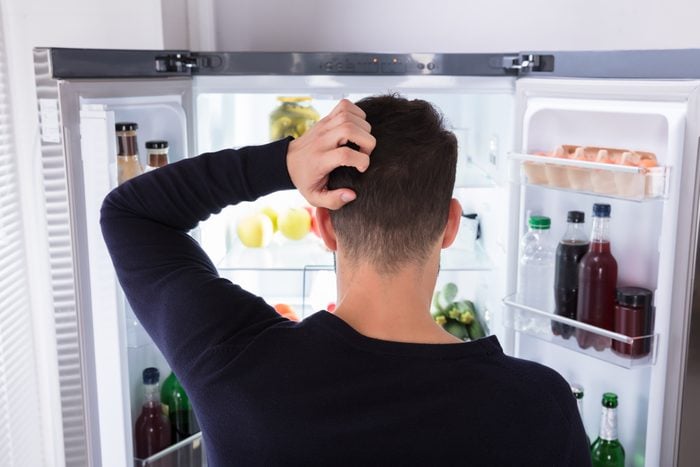
No more guessing
Ever feel like you’re playing a game of Russian roulette when scanning your fridge and trying to determine what’s OK to eat and what’s past its prime? You’re not alone. Apart from doing the old sniff test, spotting mold, and checking expiration dates, assessing what to toss in your kitchen can be a great, big mystery. “Most people are totally confused when they look in their refrigerator and try to decide whether to use the opened Caesar salad dressing or throw it out and [when generally] deciding what’s safe and what isn’t,” says B. Susie Craig, professor of Food Safety and Health at Washington State University Extension in Seattle. “Sometimes it’s confusing to me, and I’m a professional.” Add in the “Does this even need refrigeration in the first place?” conundrum, and the plot thickens.
There’s good reason for the confusion, says Don Schaffner, PhD, professor of Food Microbiology at Rutgers University, who explains that there’s a big difference between spoilage organisms (which are in many foods and will eventually cause them to look, smell, or taste bad) and pathogens (which you may not be able to see but can make you sick). “Expiration dates are not an exact science,” he says. “Food companies use a value that they think will ensure happy customers, but it’s not like the food ‘magically’ turns bad at midnight on the date in question.”
Using the USDA’s handy FoodKeeper App helps with the guessing game. You should also toss these 11 culprits in your fridge to get a jump on food safety, as well as throw out these things in your freezer.
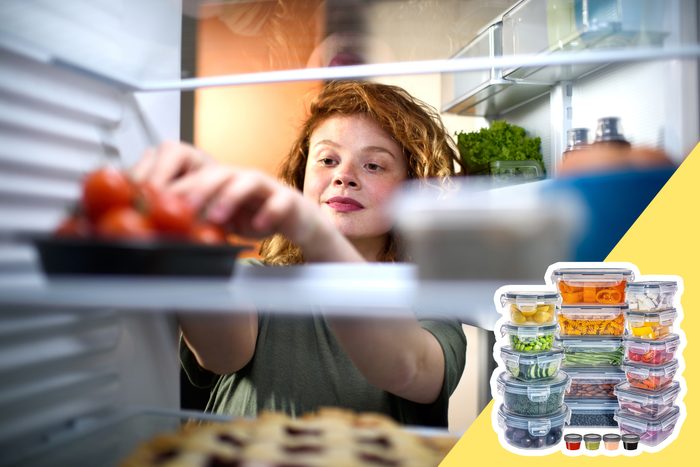
Foods without a lid
Will you get sick if you use the uncovered can of tomato paste you opened days ago when making your pasta bolognese? Or could you be harming Fido if you neglect to put a lid on his half-empty can of dog food? Probably not…but don’t expect those products to have the same punch when you pull them out again for Dinner 2.0 (yours or your pup’s). Think of your fridge as a giant food dehydrator—anything directly exposed to air will quickly dry out and probably take all the flavor with it.
According to the USDA, products will retain better flavor if transferred to a glass or plastic storage container that can be properly sealed. This 20-piece set from Amazon is BPA-free, has more than 10,000 five-star reviews, and is fully see-through, so you can avoid excessive lid-popping that exposes food to even more air and spoilage.
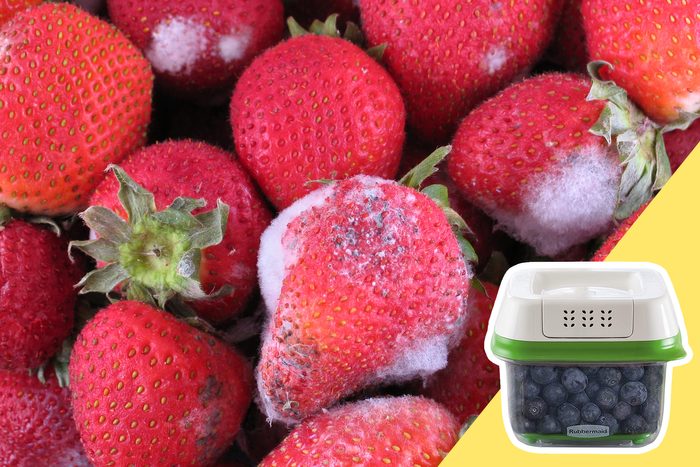
Moldy berries
This may seem like a no-brainer, but how many times have you poked through that carton of blueberries or strawberries to remove the offenders and eat the rest? Not always a good idea. “Sure, you can pick out one or two of the offending berries, wash the rest in clean, cold water, and you should be fine,” Schaffner says, but don’t try to salvage individual berries by cutting away the spoiled portions. “Throw out the entire bad strawberry—even if it’s half moldy, and make sure there are no other moldy ones around it.”
To get the most bang for your buck, store fruit in an aerated container that elevates berries from any moisture that may have dripped down and regulates the flow of oxygen and carbon dioxide to reduce spoilage. Another neat trick to make strawberries last longer: Rinse them in a mixture of vinegar and water to get rid of mold spores and bacteria.

Foods you’ve double-dipped
Pulled out the tuna salad and enjoyed a few forkfuls for lunch, then popped it back into the fridge? Tons of onion dip left after watching the big game with friends? Put thoughts of food waste aside and toss the lot—they may be contaminated with pathogens. “Staphylococcus aureus is commonly found in and around people’s noses,” Schaffner explains, “and it could be transmitted to foods by sneezing or by cross-contamination from nose to hands to food.”
A safer bet: Always keep food pristine by transferring individual portions with a clean serving spoon, and throw out the dip unless you’ve had a food cop watching the bowl for all four quarters. To avoid waste, set out only half the dip to start, and keep the rest safely in the fridge until needed. Or hand out cool individual dip “caddies” so guests can avoid contaminating the big bowl.
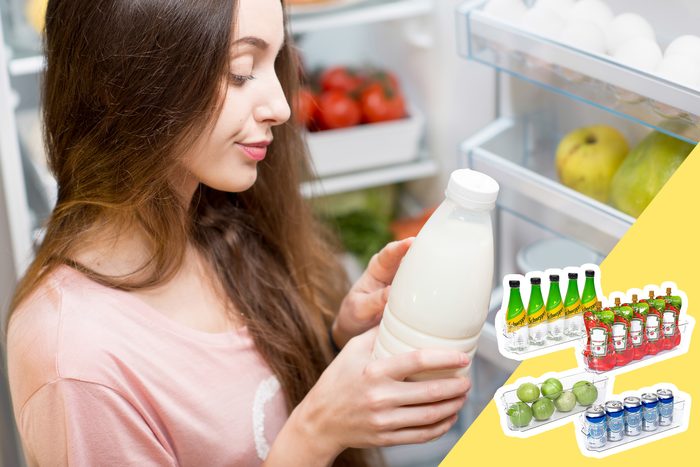
Highly perishable food that’s been stored in the fridge door
“Because refrigeration temperatures slow or stop the growth of microorganisms, it’s important to note that temperatures matter,” says Mary Yavelak, extension associate at the College of Agriculture and Life Science at North Carolina State University in Raleigh. That means quicker-to-spoil dairy foods—like sour cream, buttermilk, and cheese—are best stored on shelves, where they’re less susceptible to warm temperatures caused by the constant opening and closing of the door. Better bets for the door include water bottles, soda cans, and even sturdy condiments, which tend to be manufactured with preservatives that can stand up to those temperature fluctuations. To keep things neat and tidy, consider clear door organizers that make it easy to see everything at a glance. While you’re at it, check out these other kitchen organizing ideas you won’t know how you ever lived without.
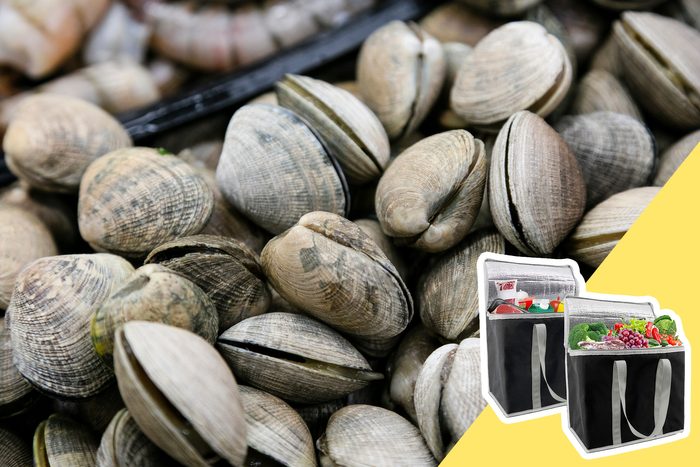
“Dead” shellfish
You may have purchased those clams, crabs, and mussels in the last 24 hours, but that doesn’t mean they’re safe to eat. In addition to making sure you buy them from a vendor who refrigerates seafood and/or presents them on a thick bed of fresh ice, perform your own safety check once home: Discard ones with cracked or broken shells; do a “tap” test (live clams, oysters, and mussels will close when the shell is tapped); and look for leg movement in crabs and lobster. To keep seafood as safe as possible during transport home from the store, consider keeping an insulated tote in your car. Also be wary of those seafood dishes you didn’t finish, as well as these other leftovers that can make you sick.
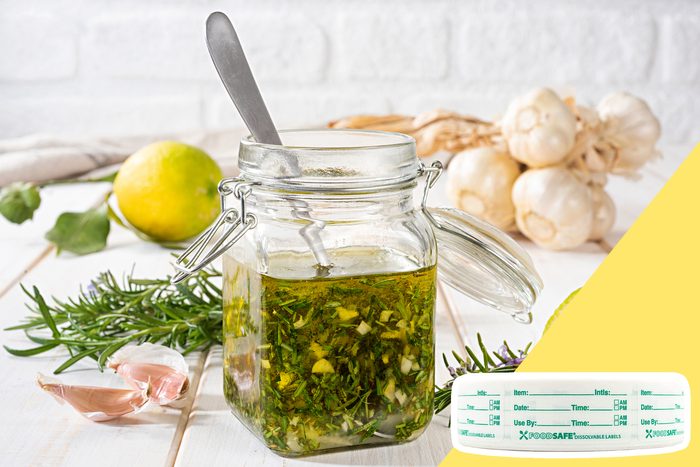
Homemade salad dressing
Unlike commercially prepared salad dressings, which can be kept for one to three months after opening, homemade salad dressings (or ones you purchase fresh from a restaurant or deli) are far more perishable—their shelf life is in the one- to two-week range. Craig keeps track of hers by using a permanent marker to label the container or bottle with the date of purchase and date of opening, but you can also use these handy premade labels, which dissolve in water so they won’t ruin your storage containers. “This reduces food waste and helps me rotate and use refrigerated foods,” Craig explains. “It’s an easy habit to adopt and takes very little time. On waste-collection day, I scan my refrigerator shelves, check the open dates, and toss items according to the guidelines in the FoodKeeper app.” Just make sure you don’t throw out these 11 items too soon.
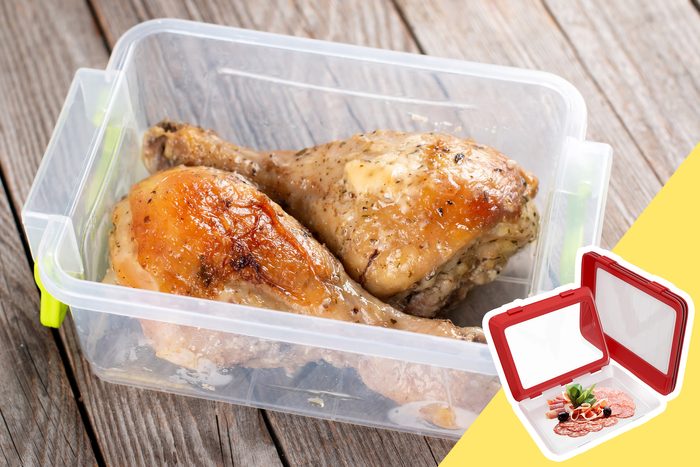
Cooked chicken or beef that’s more than three days old
“Most harmful bacteria cannot grow at refrigeration temperatures, but spoilage organisms can,” cautions Yavelak, who urges consumers to trust their “gut” instincts. “My rule of thumb is always to look at it first, then to smell it, and, if everything else seems fine, to finally taste it. This method will keep you from smelling or tasting something that may be unpleasant, as that can make some people sick to their stomach. However, getting an upset stomach after smelling or tasting spoiled food is likely not a food-borne illness caused by pathogens.”
You can extend the freshness of food (and the risk of smelling something bad!) with food preservation containers that form a vacuum-like seal without the hassle of actual fancy equipment. This stackable container from Go Deep 365 has more than 17,000 five-star reviews on Amazon. Wondering about your fruits and veggies, too? Here’s how long fresh produce really lasts.
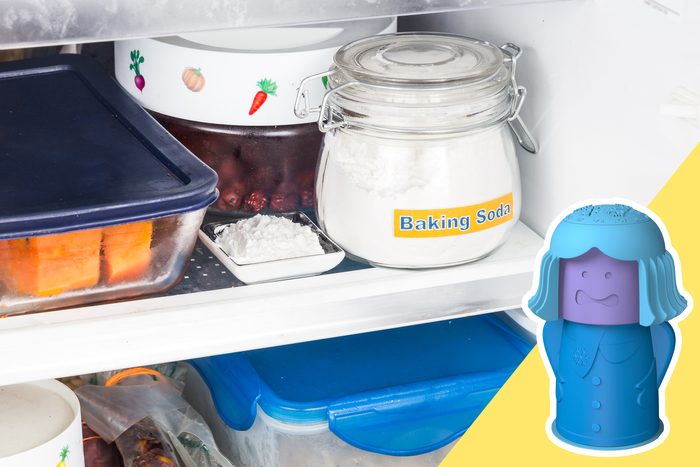
Baking soda that’s been in the fridge for more than a month
Baking soda has all sorts of nifty uses around the house…but it’s not so nifty in your fridge after about a month or so. That’s why the folks at Arm & Hammer changed their replace-it labeling from three months to 30 days: “After 30 days, baking soda has absorbed many of the odors in the fridge. By replacing the box…every month, you get improved odor elimination, ensuring your food tastes fresher longer.” To eliminate guessing (and the cardboard box in your fridge), the Chilly Mama Baking Soda Fridge and Freezer Odor Absorber & Freshener has a replacement indicator on its cute little head, so you’ll know exactly when to dump out her contents and refill.
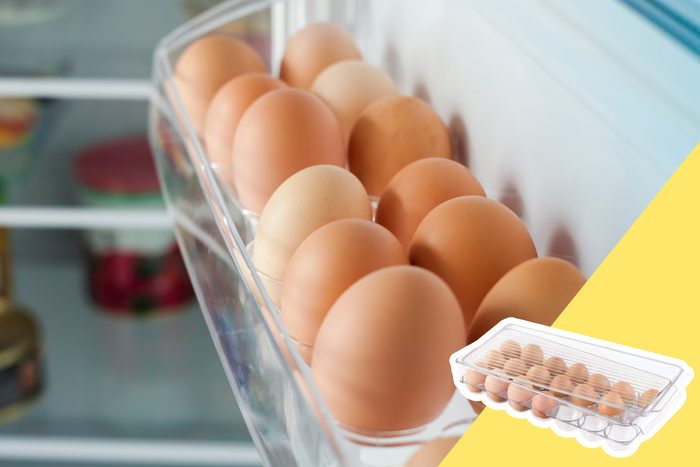
Eggs in the door
Your fancy fridge might come equipped with a convenient built-in egg rack in the door, but pull it out to make room for other items and place eggs on a fridge shelf instead, says Vlatka Lake, a marketing manager at the storage company Space Station. The frequent door opening exposes eggs to fluctuating temperatures and can cause them to rot faster, she explains. This elegant holder, which can house up to 21 eggs, keeps them protected and visible for longer storage.

Containers you drink out of
When Mom warned you not to drink out of the milk or OJ container, she may have had some insider info about the hygiene effects of backwash. “As I often like to say, this is not what we call a best practice,” says Schaffner. “Though it’s quite unlikely that someone would have pathogenic microorganisms in their mouth that would spread to the container and then grow under refrigerated conditions, the habit is kind of gross.” He suggests container-drinkers in the family be given their own personal vessel with a dedicated label and a “this is yours now” ruling. These twist-cap, BPA-free milk and juice containers will help make things abundantly clear.
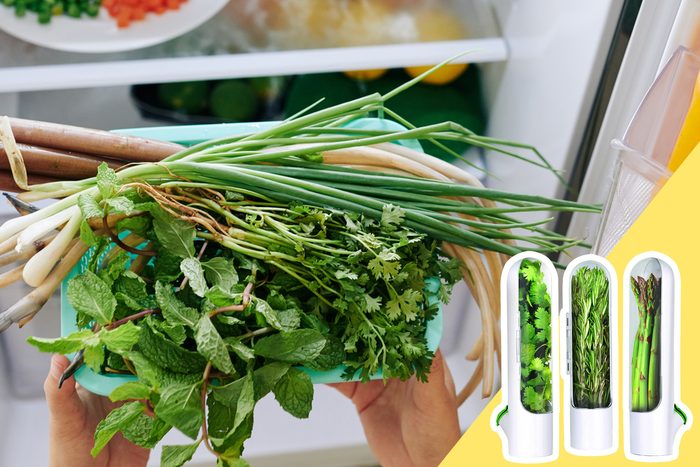
Fresh basil and other herbs
While storing this fragrant herb in a plastic bag in the fridge won’t make you sick, it will cause the vibrant green leaves to turn black and wilt—not optimal for your gorgeous salad Caprese! If at all possible, buy a live basil plant, keep it on the kitchen windowsill, and snip leaves as needed. Otherwise, trim the ends and place the basil in a small drinking glass or vase, as you would with a bunch of flowers, and set it on the shelf of your fridge. Other herbs are much heartier in the refrigerator but require air circulation to keep them fresh. Consider dedicated herb containers to maximize their life spans. Next, find out which foods never expire. (Really, never!)
Sources:
- B. Susie Craig, professor of Food Safety and Health at Washington State University Extension
- Don Schaffner, PhD, professor of Food Microbiology at Rutgers University
- Mary Yavelak, extension associate at the College of Agriculture and Life Science at North Carolina State University
- Vlatka Lake, a marketing manager at the storage company Space Station
